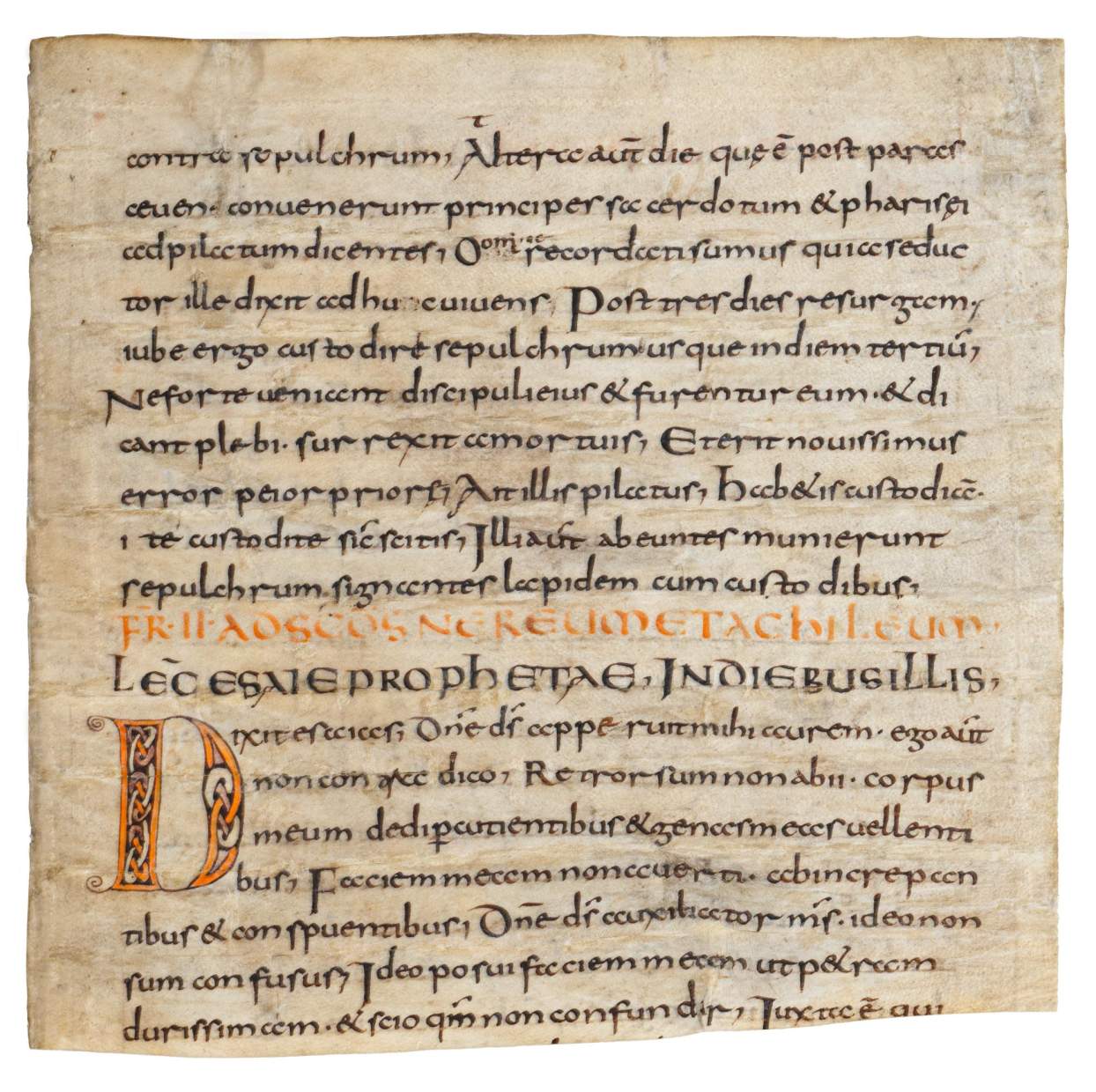

The Eis Lectionarium plenarium fragments;
Substantial fragments of a bifolium from an exceptionally early type of Lectionary, in Latin, decorated manuscript on vellum, south-east Germany (probably Freising, Bavaria), last decades of the eighth century, or perhaps c. 800.

These exceptionally early manuscript fragments originated at the dawn of medieval Christianity in southwestern Germany, a defining period for the history of Christian life and liturgy. They were used by clerics who either knew St. Boniface personally or were trained by his disciples, making them invaluable relics of a transformative era. These fragments, unseen for nearly seventy years, are the only parts of their parent volume now in private hands.
The 8th century in southwestern Germany was marked by the missionary efforts of figures like St. Korbinian and St. Boniface. These liturgical manuscript fragments offer invaluable insights into the early Christian practices in the region. The parent codex of these fragments, known as a 'Lectionarium plenarium' or 'Comes duplex', was a double-Lectionary used during Mass throughout the ecclesiastical year. Such texts are extraordinarily rare, with only a handful of fragments surviving today.
The story of these fragments begin in Freising, likely in its cathedral founded by St. Korbinian in 724 and consecrated by St. Boniface in 739. They later found their way to Ebersberg Abbey, established in 934, where they were reused as scrap for book bindings. In the 20th century, Dr. Gerhard Eis of Schriesheim discovered the fragments. Between 1946 and 1955, while working in Freising, he acquired these pieces or the book containing them.
Dating these fragments has sparked scholarly debate with esteemed palaeographers like E.A. Lowe and Bernhard Bischoff weighing in. Further academic assessments have agreed with Lowe, and unanimously now date the fragments c. 800. The script, characterised by early Carolingian minuscule with distinctive ligatures, points to the earliest phase of script development at Freising, predating Bishop Hitto's tenure.
These fragments offer a unique window into the formative years of the Church in southern Germany, bridging the so-called Dark Ages and the Carolingian Renaissance. Latin manuscripts from the 8th century are exceedingly scarce, making these fragments not just historical treasures but also rare artifacts on the market. Their discovery and preservation provide a vital link to the early days of Christianity in Europe, highlighting a period of significant cultural and religious transformation.



